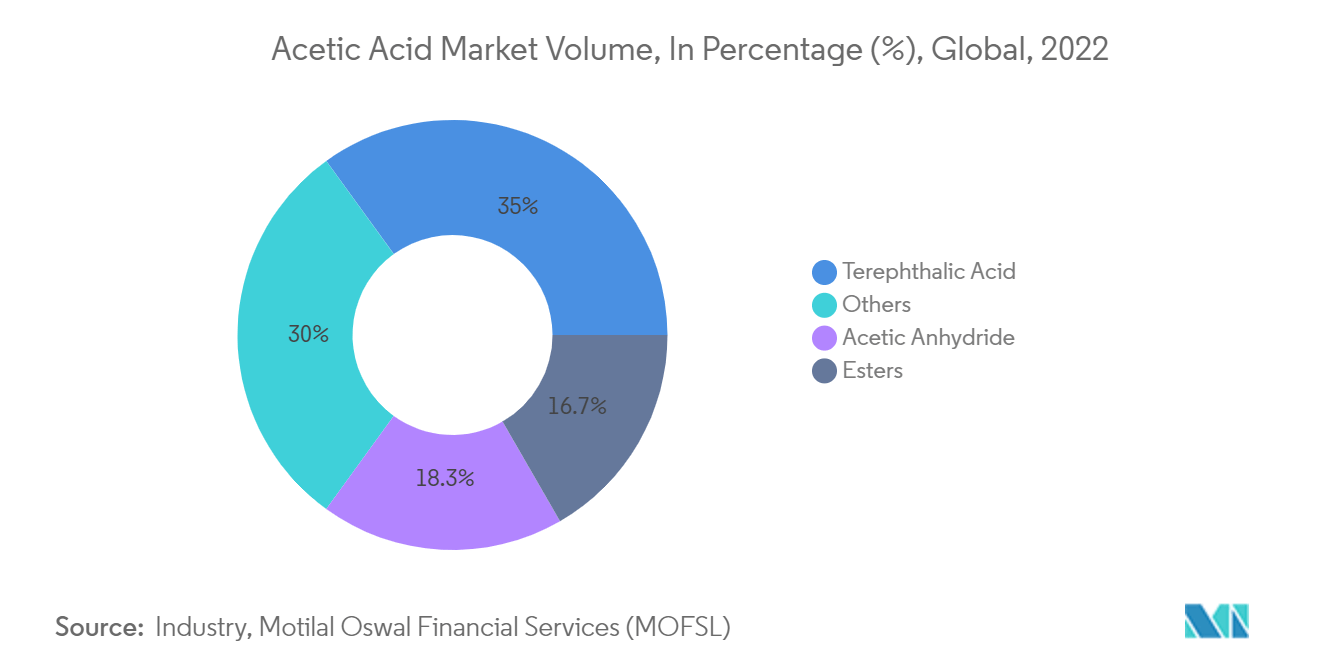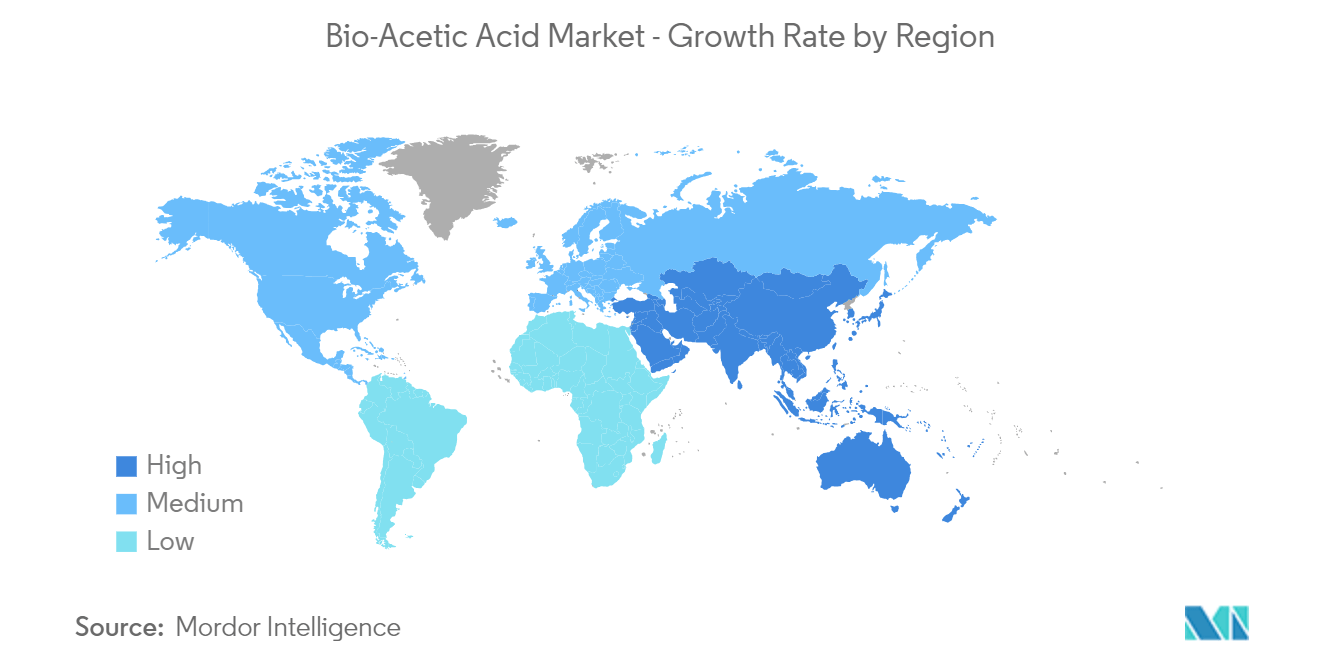Market Trends of Bio-Acetic Acid Industry
The Vinyl Acetate Monomer (VAM) Segment to Dominate the Market
- Acetic acid is mainly used to manufacture vinyl acetate monomer (VAM). The major esters of acetic acid, such as ethyl acetate and butyl acetate, are commonly used as solvents for paints and coatings.
- Vinyl acetate monomer (VAM) is used to produce water-based paints, adhesives, waterproofing coatings, and paper and paperboard coatings that can be used in various end-use industries such as construction, paints and coatings, plastic, solvents, adhesives, and textiles.
- On the Global front, growth in vinyl acetate monomer consumption is driven by demand in China and the United States.
- In India, in 2023, Asian Paints (Polymers) Private Limited (APPPL), a wholly-owned subsidiary of Asian Paints Ltd, announced the setting up of a manufacturing facility of vinyl acetate-ethylene emulsion (VAE) and vinyl acetate monomer (VAM) at Dahej, Gujarat. The approximate cost of setting up the manufacturing facility would be INR 2,100 crore (USD 251.24 million).
- According to the Motilal Oswal Financial Services (MOFSL), vinyl acetate monomer (VAM) is the largest acetic acid derivative, accounting for 40% of its global demand.
- In October 2023, US-based multinational contractor KBR and its Japanese acetyls technology partner, Showa Denko, were selected by Asian Paints to provide services for a grassroots vinyl acetate monomer (VAM) plant in India. Under the contract terms, KBR will provide a technology license, basic engineering, and proprietary equipment for a 100,000 t/y plant. In contrast, Showa Denko will provide the catalysts, along with its technical operating know-how.
- Thus, all such trends in the VAM market are expected to drive the demand for the bio-acetic acid market during the forecast period.

Asia-Pacific to Dominate the Market
- Asia-Pacific is the largest consumer of bio-acetic acid globally and is the fastest-growing market.
- Acetic acid is an important chemical reagent and industrial chemical used in producing plastic soft drink bottles, photographic films, paints, and coatings. The increasing construction activities boost the demand for paints and coatings to be used, boosting the demand for acetic acid.
- Asia-Pacific accounts for the growing demand for vinyl acetate monomer (VAM), a crucial role that China is playing. Due to the huge population in China and India, they pose a huge consumption potential for the global market.
- In India, 100% of domestic VAM demand is met through imports. The largest derivative, vinyl acetate monomer (VAM), accounts for 34% of acetic acid consumption. Singapore is a major importer, with more than half the share of the total quantity of VAM imported by India.
- In December 2023, Jiangsu Sopo Chemical in China announced investing in a vinyl acetate and EVA-integrated project in the Zhenjiang New District. This ambitious project will unfold in two stages, beginning with the construction of a VAM production plant with a substantial capacity of 330 thousand tons per year.
- In early 2023, INEOS and LOTTE Corporation announced plans to expand VAM production capacity from 450 kilotons to 700 kilotons by adding a third VAM plant in Ulsan, South Korea, with expectations for completion by the end of 2025.
- The factors above contribute to the increasing demand for bio-acetic acid consumption in Asia-Pacific.


